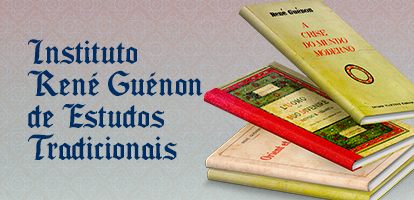Each window has its frame, richly chiseled and cut, with forms that represent the air (above) and the water (below). The internal part of the lantern is empty, with no material axe crossing it; there the candle (of resin or wax) is put, or, more recently, the electric lamp. The opaque glass is painted in the traditional style of the masterpieces of the “Chinese South school” that distinguishes itself by the delicacy and refined simplicity of its means and the “spontaneous” character of its watercolor technical procedure. Well, these paintings of the “South school” of Buddhism — a designation that does not have a geographic meaning, but symbolizes a tendency — represent in reality the Taoist painting, such as perpetuated in the frame of Chinese and Japanese DHYANA.(7)
Frequently, these pictures portray geomantic landscapes (8) seen from twelve different angles. For example, it is common to appreciate in the watercolors a small temple at the edge of a precipice; rocky mountains; lakes and rivers; clouds and vapors in a sweet and imperceptible transition from the ground up to the sky.
Familiarized with the constitutive elements and the general form of the Kon-Tan, we can begin a few considerations on its symbolism.
We have seen that in the superior and inferior parts of the wooden structure supporting the windows, there are two hemispheres: united, the two halves represent the “egg of the world”(9), whose “fecundation” produces a cosmogenesis.(10) Trespassing the axe of the superior hemisphere, there is a hook that connects itself to the “chains of the worlds”(11) (the Sûtrâtmâ (12) of Hinduism), or to the successive links of the various planes of existence of which our world is one.
The Kon-Tan has six superior facets and six inferior ones, making up the number twelve, that refers to the annual cycle and to the twelve zodiacal Windows.(13) Each of the six faces is dominated by an extreme-orient dragon; this known Chinese symbol presents a winged head, its superior part has the lines of a terrestrial animal, its inferior part has scales and a fish tail; is it the Pontific Dragon, because dominating and interlocking the three worlds: the heavenly, intermediary, and terrestrial.
As in Christianism and in other traditional forms the Word is at the Beginning; of the dragon’s mouth (“Long”) comes out the red or yellow silk (“Lon”) representing the Logos (word) as light and power; each silk string represents the spiritual influence surrounding and sustaining the worlds.
The empty center of the lantern is the seat of Light; its invisible axe is the “Diamond Pillar,” whose inferior extension supports the main silk pendant symbolizing the King-Priest, occupying for this reason a central position in the group. Taoism affirms: “the rotation of the worlds depends in the unmovable center.”
From a more exterior or superficial point of view, the Kon-Tan mirrors the multifaceted world through its twelve windows; this world is illuminated by an internal light and is supported by a link of six dragons. However, if we deeply consider this lantern, i.e., from a symbolic angle, a true transformation occurs, in the strict etymological sense of this word: “ beyond forms.”
Each apparent plane we see is understood, “dominated” and suppressed, giving way to a new successive deepening, until we no more see a lantern because vertiginously transported to its very essence. When this occurs, the superficial no more has meaning. It disappears.
In this case, whoever sees the painted landscapes in the glass windows, is truly seeing the harmony of natural elements in their maximum manifestation, which takes the observer to a time-space synthesis.
The very form of the Kon-Tan suggests such a synthesis when combining images, proportions and rhythms with cyclical numbers (3, 6, 12, 36, 108 etc) (14) that determine the architecture of the structure.
This first synthesis remits the privileged observer to the light that sustains all appearance or manifestation, a light that is not directly seen, but that lies at the origin of all associated with the Word that is Long, the cosmological dragon. This Dragon is unfolded in six in the Kon-Tan, for we have seen that the senary synthesizes the macrocosm and the microcosm; from its mouth flow the red and the yellow in the silk thread, the Word as light and power, the cloth as weft and warp of worlds ...(15)








